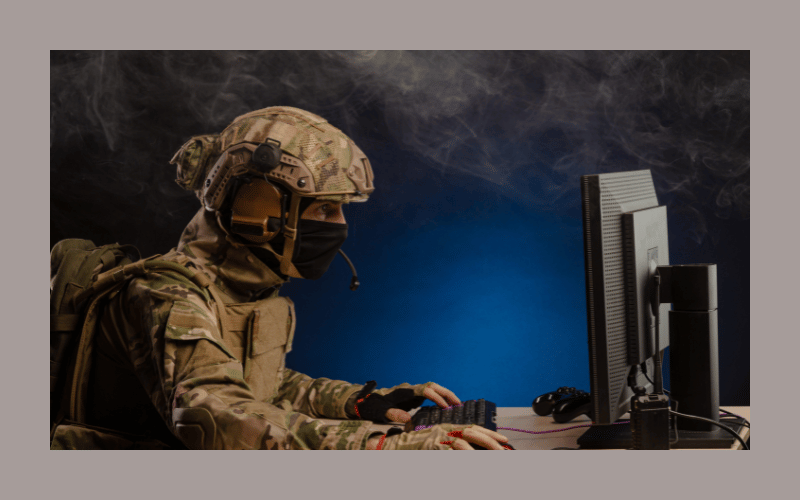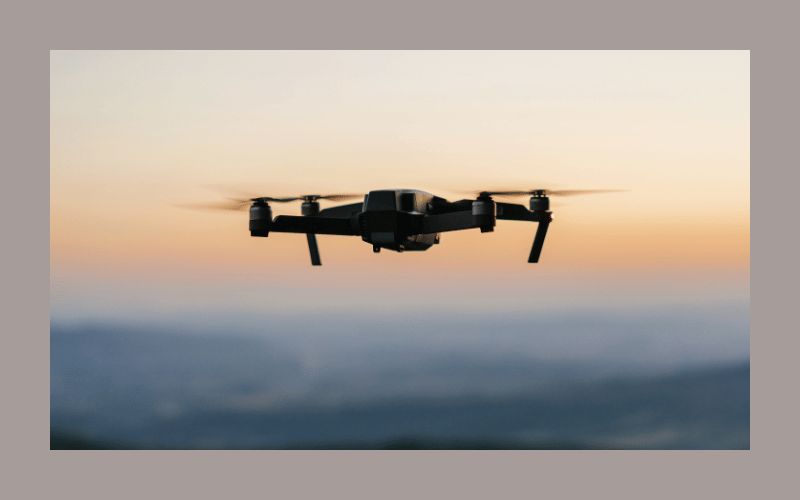The dynamic environment of the current warfare scenario has transformed military tactics with the involvement of drone technology and cyber capacity. Unmanned Aerial Vehicles (UAVs), also referred to as drones, have evolved from being used merely for surveillance to crucial assets for combat operations. At the same time, cyber warfare is also emerging as a critical area, which is shaping the results of conflicts without physical confrontations. The coming together of drone operations and cyber measures is a paradigm shift in the way wars are construed and implemented.
The Evolution and Role of Drones in Modern Warfare
Drones have greatly evolved since their introduction. Originally meant for a reconnaissance role, they are currently performing multipronged roles such as targeted strikes, gathering intelligence, and logistical support. The strategic value of drones has been demonstrated by their use by the U.S. military in counter terrorism activities. Similarly, the war between Russia the Ukraine has brought out the efficiency of drones in practical combat situations.
Unfavorable conditions of the technology in terms of accessibility and affordability have contributed to its mass use by state and non-state actors. This democratization presents challenges because the adversaries will be able to use drones for asymmetric warfare, surveillance, or even cyber attacks.
Cybersecurity Challenges in Drone Operations
With the growing role of drones in military action, it is critical to secure drones from cyberattacks. Such systems are very dependent on the usage of communication networks and software, hence prone to hacking, jamming, and data interception. Events in the past include the supposed capture of a U.S RQ-170 Sentinel Drone by Iranian forces in 2011, that drives to emphasizes the flaws present in drone systems.
To reduce such risks, militaries use encryption protocols, secure communication channels, followed by intrusion detection systems. Software updates and training of drone operators keep coming regularly, and serve to reinforce drone cybersecurity. Nevertheless, there is a constant need for further improvements in the protective measures as cyber threats are rapidly changing.
Integration of Drones and Cyber Measures in Military Strategy
The integration of drone operations with cyber operations has triggered innovative military moves. Drones have potential as a cyber payload deployment system, an electronic warfare tool, and a tool to jam enemy communications. On the other hand, cyber tools can help in expanding drone functionalities, whereby they can operate autonomously and display better target acquisition.
Such an integration enables network-centric warfare, the information superiority of which becomes the decisive one. When drones, sensors, and command centers are connected via secure networks, militaries can gain situational awareness in real time and coordinate actions.
Countermeasures and Defense Against Drone and Cyber Threats
The increase in the use of drones and cyber threats has led to the formulation of countermeasures. Such systems as the Mobile-Low, Slow, Small Unmanned Aircraft Integrated Defeat System (M-LIDS) are configured to detect and interdict drone threats using a kinetic and electronic attack. Also, anti-drone meshes and electronic jamming devices have been used to secure the assets from aerial attacks.
In the cyber world, the proactive defense tactics such as threat hunting and cyber deception are used to protect against future attacks. Military private entrenchment is very important in developing and implementing such advanced defense mechanisms.
Global Implications and Ethical Considerations
The use of drones and cyber measures in a conflict raises serious questions of an ethical and legal nature. Circumstances connected with the autonomy in lethal decision-making, cyber-attack responsibility, and the likelihood of collateral damage require the development of international norms and regulations.
In addition, the global race for drone and cyber technologies exposes the need for diplomatic engagements to curb escalations and also regulate responsible uses. Transparency and abidance by international laws are necessary to secure and stabilize the whole world.
Navigating the Future of Warfare
The combination of drone technology and cyber warfare is a paradigmatic change in the conduct of military operations. With the tools becoming more complex and readily available for public use, the necessity of strong cybersecurity precautions, ethical issues, and the collective efforts for the vital guidance of using these tools are of utmost importance. This new frontier needs to be traversed with a balanced approach using the advancements in technology, and yet respecting the terms and principles of international law and human rights.
Artificial Intelligence: The Next Leap in Drone-Cyber Integration
As drones and cyber operations develop, Artificial Intelligence (AI) is quickly evolving to become the glue that makes their synergy greater. AI-operated drones can move autonomously, track objects, and even make instant decisions under intense pressure right at the battlefield, which limits the demand for continuous monitoring by humans. With the aid of cyber capabilities, AI can analyze digital signals and preempt the enemy’s cyber maneuvers, perform defensive countermeasures in real-time.
This AI assimilation also includes the swarm technology, where several drone aircraft function as one unit, coordinated using machine learning algorithms. These swarms can execute complex actions, ranging from jamming of radar to overwhelming the enemy’s defenses or providing distributed surveillance, all of which would dynamically adjust to the new situations. If combined with cyber tools, such swarms of drones can be used to intercept the enemy communications or to infect the networks with malware in case of a measurable incursion.
Yet, there is the risk that comes with much capability. The adoption of AI-empowered deadly autonomous weapons systems (LAWS) creates an ethical red flag. There is no global agreement on who to hold liable should an unauthorized or erroneous attack occur because of an AI-based drone. This highlights the requirement of clear rules and monitoring as the militaries embrace AI-powered systems, increasing.

Civilian Implications and the Blurring of War Boundaries
Another vital aspect that is usually glossed over in debates about drone-cyber warfare is the fact that it influences civilian life. Compared with the old days when wars would be waged far from the battlefield, these modern approaches can play out in the skies over communities and within civilian systems such as power grids, financial networks, and public communication systems.
For example, a cyber-attack on Air traffic control or emergency lines of communications could render a whole city helpless, with a gunshot not being fired. In the same way, a drone programmed to observe an army zone may inadvertently — or deliberately — film civilian activity, as issues of privacy violations and international laws are triggered.
Terrorist organizations and insurgents are also using commercial drones modified for attacks or intelligence gathering purposes, particularly in cities. Low-cost weapons of mass disruption can create panic and destabilisation even without mass casualties.
In response to this, cities the world over are testing “urban drone security zones”- areas that use anti-drone tech and legislation to preempt illegal use of UAVs from occurring. Enforcement, however, is proving difficult, with the increasing miniaturization and affordability of drone tech.
The Future of Conflict: Cyber-Drone Doctrines and Policy Challenges
The contemporary military doctrines are being rewritten to incorporate drone-cyber operations as the fifth dimension of war, co-existing with land, sea, air, and space. Countries such as the U.S, China, Russia, and India are working to develop cyber-command divisions that liaise with drone branches to carry out concurrent operations.
Indigenous development of secure UAV systems is being facilitated in India, for example, by the development of tri-service commands and the end of exclusion of private tech players from defense procurement. Defence Cyber Agency (DCA), in conjunction with Defence Space Agency (DSA), is soon to have a synthesis of strategic doctrine that brings cyber-intelligence together with drone warfare tactics.
Globally, there is an enhanced call to set treaties regulating drone and cyber weapons use similar to nuclear disarmament regimes. These would include the transparency in deployment of AI, restrictions on autonomous weapons, and protection of civilians from cyber attacks on critical infrastructure.
With the change in the contours of military and politics, the drone and cyber warfare will grow more complex and intricate. It is not only a national security obligation but a humanitarian obligation to understand these developments and put in place a sound ethical, legal, and technological space. The future of battle may not be in battalions and tanks, but in bots and bandwidth. It is high time that the global community took note of it.
Private Sector & Dual-Use Technology: A Double-Edged Sword
One of the most important changes in the sphere of drone and cyber warfare is a enhanced contribution of the private companies, including tech companies and drone start-ups. Government has been the prime mover in defense innovation historically, but the modern landscape of innovation today leans heavily on private innovation for drone hardware and AI algorithms for cybersecurity infrastructure and satellite communication networks.
Firms such as DJI, Palantir, and Anduril have waded into this technologically gray area – a concept referred to as dual-use technology. Civilian drones can be adapted for surveillance, or even kinetic application, with limited adjusting. Likewise, software that is developed for data analytics, or IoT, can be weaponized to meet the cyber-intelligence goals.
This democratization of military-grade tech speeds up innovation while creating serious issues of regulating, controlling exports, and unwanted diffusion. It is there is an immediate need for worldwide policies that will track the processes of development, marketing, and implementation of these technologies.














